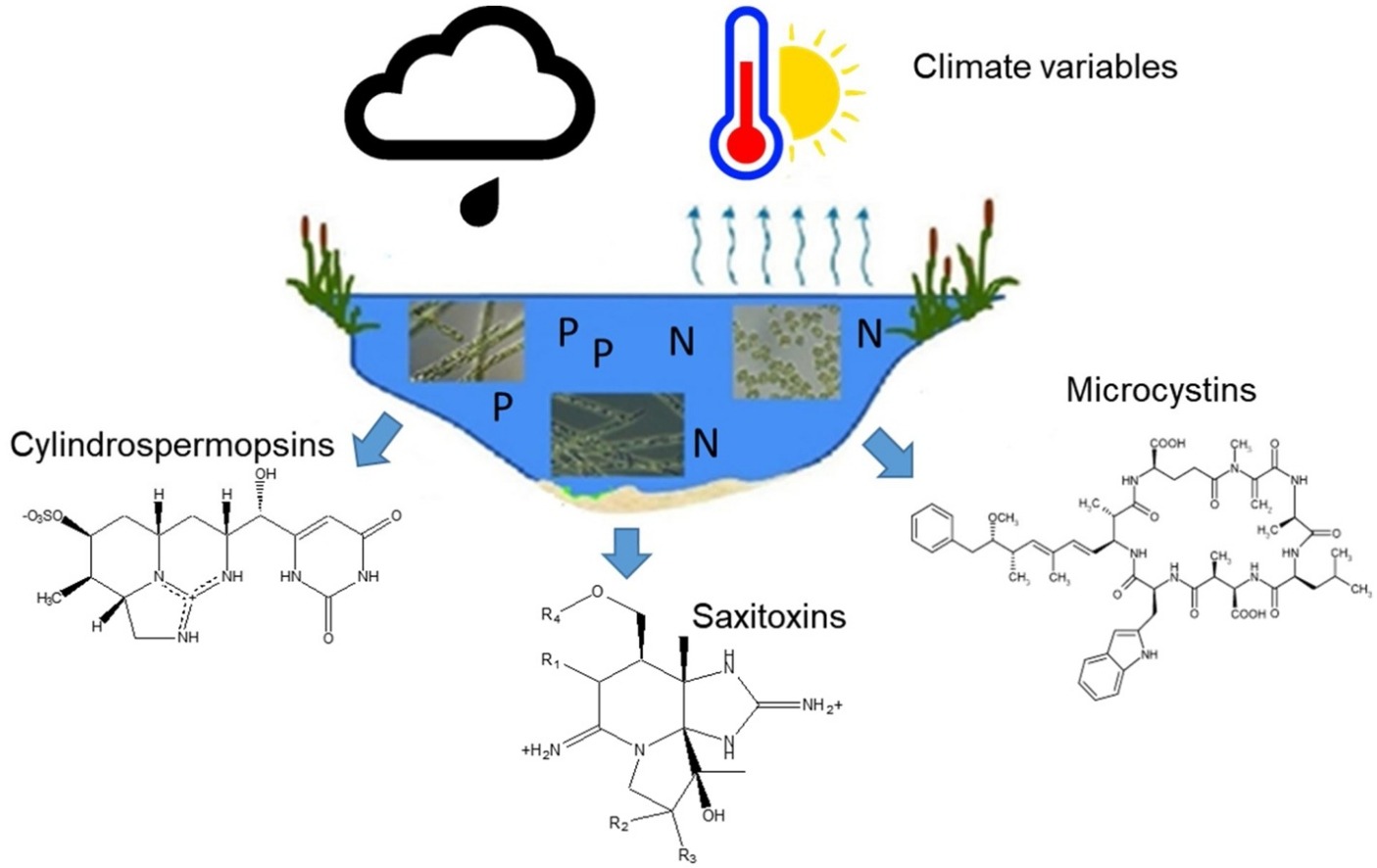
Citation
Barros, M. U. G., A. E. Wilson, J. I. R. Leitão, S. P. Pereira, R. P. Buley, E. G. Fernandez-Figueroa, and J. Capelo-Neto. 2019. Environmental factors associated with toxic cyanobacterial blooms across 20 drinking water reservoirs in a semi-arid region of Brazil. Harmful Algae 86:128-137.
Abstract
Cyanobacteria are known to produce a wide variety of bioactive, toxic secondary metabolites generally described as hepatotoxins, neurotoxins, cytotoxins, or dermatoxins. In Brazil, the regular monitoring of cyanobacterial toxins has intensified after the death of 65 patients in a hemodialysis clinic in Caruaru in the state of Pernambuco due to microcystin exposure. The primary objective of this study was to use multivariate statistics that incorporated environmental parameters (both biotic and abiotic) to forecast blooms of cyanobacteria and their toxic secondary metabolites in 20 drinking water reservoirs managed by the Water Treatment Company of Ceará (CAGECE) in the semi-arid region of Ceará, Brazil. Across four years (January 2013 to January 2017), 114 different phytoplankton taxa were identified, including 24 cyanobacterial taxa. In general, Ceará reservoirs were dominated by cyanobacteria due to eutrophication but also because of the dry and warm climate found throughout the region. Interestingly, specific cyanobacterial taxa were influenced by different biotic and abiotic factors. For example, nitrogen-to-phosphorus (N:P) and evaporation were positively related to saxitoxin-producing taxa, especially Raphidiopsis raciborskii, while temperature, electrical conductivity, total phosphorus, and transparency (measured as Secchi depth) were positively associated with microcystin-producing taxa, such as Microcystis aeruginosa. Climate forecasts predict higher evaporation and temperatures in the semi-arid Ceará region, which will likely magnify droughts and water scarcity as well as promote toxic cyanobacterial blooms in reservoirs in the future. Therefore, understanding the factors associated with algal blooms dominated by specific taxa is paramount for water resource management.